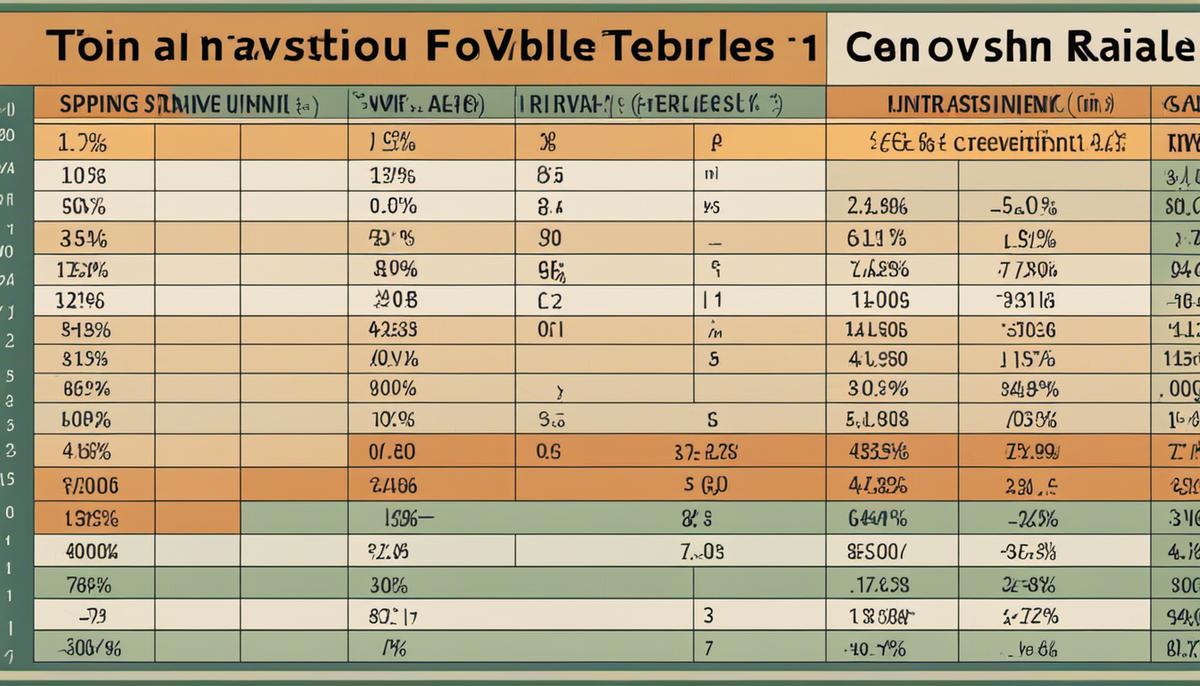In our daily lives, we often come across different units of measurement which can sometimes be confusing, especially when these units are used interchangeably in different parts of the world, such as the metric system and the US customary units. Knowing the difference between kilometers and miles, or kilograms and pounds is not only interesting but valuable. Opening the doors to this knowledge, it’s essential to understand the fundamentals of units of measurement. This comprehension forms a basis for converting one unit into another, a skill that will be found crucial in diverse fields of life and work. As we delve into mathematical conversions between units and formatting this data into user-friendly conversion tables, accuracy checks ensure the efficacy of our efforts. Thus, this journey of gaining more insight into the world of measurements promises an enriched understanding.
Understanding Measurement Units
Understanding Different Units of Measurement
Measurements are crucial in many aspects of daily life, from cooking recipes to constructing buildings. Different systems of measurement are utilized around the world. Primarily, these are the US customary units used in the United States and the metric system used practically everywhere else.
The Metric System
The metric system is a decimal-based system of measurement. It is used universally in science, widely across most countries worldwide (excluding the US), and is based on the meter, kilogram, and second (MKS) units. In the metric system, measurements are easily converted by multiplying or dividing by powers of ten.
For instance, the prefix ‘kilo’ denotes a factor of one thousand. Therefore, one kilometer is a thousand meters, and one kilogram is a thousand grams. Similarly, the prefix ‘milli’ denotes one-thousandth. Hence, one milliliter is one-thousandth of a liter.
US Customary Units
Contrastingly, the US customary units are less uniform. Distances are typically measured in inches, feet, yards, and miles. There are 12 inches in a foot, 3 feet in a yard, and 1,760 yards (or 5,280 feet) in a mile.
Weights are often recorded in ounces and pounds, with 16 ounces in a pound. Volume measures include fluid ounces, cups, pints, quarts, and gallons, with 8 fluid ounces making up a cup, 2 cups to a pint, 2 pints to a quart, and 4 quarts to a gallon.
Conversion Between Different Units
Understanding differences between units like kilometers and miles, kilograms and pounds, or liters and gallons will be crucial in creating a conversion table.
One mile is approximately 1.609 kilometers. To convert from kilometers to miles, you can use the formula: miles = kilometers * 0.621371.
One pound is equivalent to approximately 0.453592 kilograms. To convert from kilograms to pounds, employ this formula: pounds = kilograms * 2.20462.
One gallon is approximately 3.78541 liters. To convert from liters to gallons, use this formula: gallons = liters * 0.264172.
Creating a Conversion Table
A conversion table consists of two columns each corresponding to a different unit of measure. To create a conversion table, start by choosing two units you wish to convert, such as kilometers and miles. In the first column, list numbers 1 through 10 (or a different range if you prefer) under ‘Kilometers’. In the second column, title it ‘Miles’ and list the corresponding values using the conversion rate (1 mile = 1.609 kilometers).
Repeat this process for other measures such as kilograms and pounds, or liters and gallons. This will provide a quick reference table for daily use, travel, or other needs requiring an understanding of different units of measurement.

Mathematical Conversions Between Units
Understanding Units of Measurement
Units of measurement offer standardized quantities to represent the attributes of physical properties or items. These units are the basis of all kinds of measurements, for distances (inches, feet, miles, etc), weights (ounces, pounds, grams, etc), volumes (cups, ounces, liters, etc) and so forth. It’s essential to know and understand these units for making accurate measurements and calculations, especially when converting from one unit to the other.
The Role of Conversion Factors
A conversion factor is a number used to change one set of units to another, by multiplying or dividing. When a calculation involves different units, conversion factors are used to convert these units into a common one. For example, to convert inches to centimeters, the conversion factor 2.54 is used, which is the number of centimeters in an inch.
Importance of Mathematical Relations in Unit Conversion
Mathematical relations between different units of measurement are critical for successful conversions. These conversion relationships are based on precise definitions. For instance, 1 inch exactly equals 2.54 centimeters, and this equivalence is used to convert measurements between these two units. By definition, these relations are ratios or fractions that equal one. Knowledge of these ratios and how to apply them makes it possible to convert units with accuracy and precision.
Building a Conversion Table
Let’s give it a try; imagine you’re creating a conversion table for volumes using the metric system:
American Units Conversion Factor Metric Units
1 teaspoon 4.93 milliliters mL
1 tablespoon 14.79 milliliters mL
1 ounce 29.57 milliliters mL
1 cup 236.59 milliliters mL
1 pint 473.18 milliliters mL
1 quart 946.35 milliliters mL
1 gallon 3.785 liters L
Note that each conversion factor represents the number of metric units for one American unit.
The process of creating a conversion table involves listing all the relevant units in one column, finding out conversion factors for each unit, and then applying these factors to obtain the corresponding values in the other system of units. With practice, it becomes easy to memorize common conversion factors and use them to switch between systems of measurements conveniently.

Formatting and Organizing a Conversion Table
Understanding Conversion Rates
The first step towards creating a conversion table is understanding conversion rates. A conversion rate is a ratio expressing how much of one measure equals another. For example, in a height conversion table, you might note that 1 inch equals 2.54 centimeters.
Gathering Necessary Information
Begin with deciding what measurements you wish to include in your conversion table. Research and gather accurate conversion rates for those measurements. For instance, if you’re creating a table for volume measurements, you’ll need conversion rates between cups, milliliters, tablespoons, etc.
Choosing a User-Friendly Layout
The next step is deciding on a layout. A basic linear table is the simplest and often the most user-friendly design. Create categories for the different measurement units with a clear demarcation between each. The categories should be placed where they can be easily seen and interpreted. Columns work particularly well, as they allow the eye to travel down easily, making the information quicker to grasp.
Designing the Table
Start designing your table with the units of measurement in the leftmost column, then add their equivalent values going across the row to the right. This creates a visual grid where the eye can follow a line from the unit on the column to its conversion value on a row. For example, if you’re converting inches to centimeters, start with 1 inch in the leftmost column and mark the equivalent in cm in the row across.
Allowing for Simple Comparisons
To maximize the table’s usability, start with the smallest units and work your way up to larger ones. This allows someone to easily compare between different units of measure. For instance, your table might start with teaspoons, then move on to tablespoons, then to cups, and so on. This makes it simple to see how many of each smaller measurement fit into the larger one.
Streamlining Information Presentation
Last ly, avoid cluttering your table with unnecessary information. Include only essential data that will help the user in making quick and accurate conversions. The aim is to design a table that is comprehensive, accurate, yet straightforward to ensure that any user, regardless of their familiarity with conversion rates, can easily understand and use the table.

Assessing the Accuracy of Conversion Table
Gathering Accurate Information for Your Conversion Table
The first step in ensuring accuracy in your conversion table is to gather correct and reliable information. Utilize credible sources to obtain the accurate conversion rates you need. Scientific journals, educational institutions or government websites often provide this type of information. For instance, if you are creating a conversion table for units of length, consult resources like the National Institute of Standards and Technology (NIST). Make sure to record the exact conversion rates including any decimal points or fractions for precision.
Cross-checking Your Conversion Table
After the initial data gathering, double-check your findings. Perform an online search of the conversion rates you’ve recorded to see if they match the data provided by other reputable sources. Consider having a second person independently verify the rates. This can help detect any errors that may have been inadvertently overlooked. If discrepancies are found between different sources, investigate further to confirm which information is accurate.
Using Conversion Tools for Accuracy
There are various tools available that can be used to ensure the accuracy of your conversion table. Online unit conversion tools or calculators are one example. These digital platforms are designed to give accurate unit conversions instantly with a high level of precision. It’s always a good idea to cross-check your conversion rates with these tools.
Some software or mobile applications can also be helpful in ensuring accuracy. For example, Excel has functions that allow you to convert between different units. Using such features as a verification step can help you validate your conversion table.
Performing Blind Re-Checks
An additional method to ensure accuracy is performing a blind re-check. This involves finding the inverse conversion rate and ensuring it alludes to the original unit. For instance, if you have noted that 1 inch equals 2.54 cm, the blind re-check would imply that 1 cm should equal approximately 0.3937 inches.
Importance of Regular Updates
It’s vital to remember that some conversion rates can change over time due to various factors, such as changes in global standards or scientific improvements. Regular updates of your conversion table will help keep it accurate and reliable. This means returning to your original sources to check for updates or changes periodically.
Ensuring the accuracy of your conversion table through diligent data gathering, cross-checking techniques, and utilization of conversion tools not only safeguards against errors but also ensures the reliability and usefulness of your table for the end users.

By the end of our exploration, a firm understanding of units of measurements around the globe, their differences and similarities, forms in our mind. We learn not only the essence of each unit but also the core mathematical conventions needed to convert from one to another. The process doesn’t end here; organizing this information into a neatly designed conversion table further enhances this knowledge’s utility. Above all, we learn the importance of maintaining accuracy in these conversions, as even small inaccuracies can lead to consequential mistakes. All in all, the insight gained into measurements, conversions, and their organizing principles serves as an indispensable tool that we can all benefit from in our day-to-day lives.
